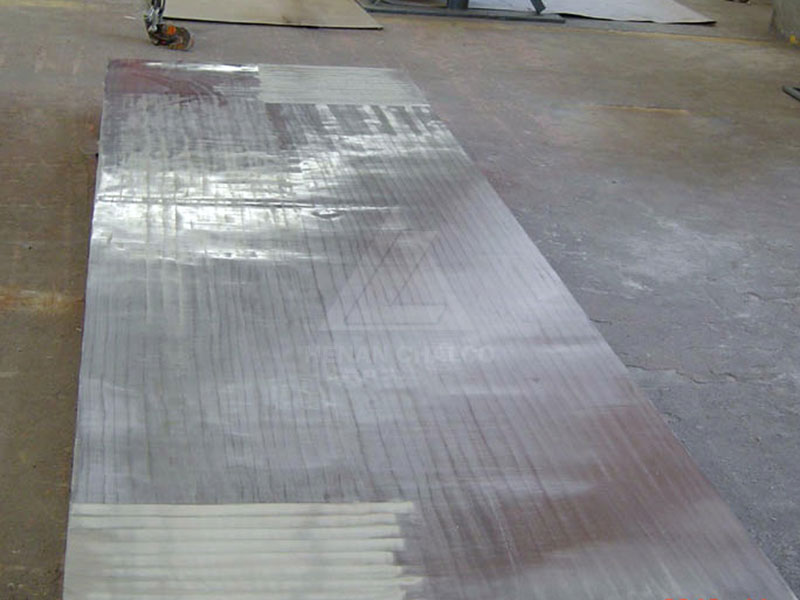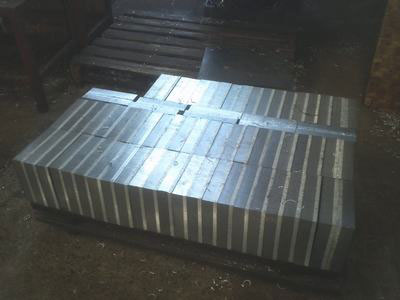Aluminum has excellent electrical conductivity and thermal conductivity, making it widely used in the electrical industry. Aluminum is non-ferromagnetic, which is an important characteristic for the electrical industry and the electronics industry.
The specific strength of some aluminum alloys is comparable to that of steel, and its specific stiffness exceeds that of steel. Therefore, aluminum alloy materials have been widely used in transportation, chemical industry, machinery, power, electronics and construction, especially in aerospace industry.
Aluminum clad steel bimetal bimetallic composite transition joints are a new type of structural material with special properties. Because of some properties of aluminum and steel, especially the difference in melting point and strength, and the fact that many intermetallic compounds are formed between them, it is difficult to make them into composite materials by conventional processes. This makes explosive welding the best way to manufacture large area aluminum steel composite materials.

In the manufacture of marine ships, the application of aluminum alloys is mainly to connect aluminum structural parts with steel decks. In the past, rivets or screws were used for this connection, which could not guarantee sealing, thus accelerating the corrosion of seawater media. The use of aluminum clad steel bimetal bimetallic composite transition joints, the temperature of the joint is generally <300 ℃. If titanium is added between aluminum and steel, both aluminum-titanium-steel transition joints are used, the bonding strength and conductivity can remain unchanged when the service temperature reaches 450 ℃. Generally, this kind of joint is used to connect the steel deck of ship with the superstructure of aluminum alloy. This process of aluminum-steel transition connection can completely replace riveting and completely solve the problem of aluminum-steel transition connection. Aluminum clad steel bimetal bimetallic composite transition joints are also widely used in offshore containers, with good corrosion resistance and attractive low weight, widely replacing rivet joints, having good shear strength, and withstanding salt testing.
Aluminum alloy-titanium-low carbon steel (stainless steel) three-layer composite materials have been widely used in frigates and other ships cabins, ship side as well as masts, liquefied natural gas tanks and so on.
| Shear strength of three kinds of aluminum steel composite transition joints | |||||
| Application | Type | Dimension | Maximum allwable temperature/℃ | Guaranteed and minimum σt /MPa | |
| When processing | When using | ||||
| Electric appliance | Aluminum-Steel | According to the requirements of users, we supply the finished products with pure aluminum plates of 12mm * 18mm. | 315 | 260 | 55 |
| Aluminum-titanium-steel | On the low carbon steel 25mm * 35mm, the thickness of titanium interlayer is 2mm. | 480 | 425 | 55 | |
| Copper-Aluminum | The copper layer or oxygen-free copper layer of 3-6mm thick is supplied according to the requirements of the user, which is compounded on the pure aluminum plate with the section size of 10mm x 25mm | 260 | 150 | 55 | |
| Construction | Aluminum alloy-pure aluminum-steel | The finished product is 6mm thick aluminum alloy plate, which is made of 9mm thick aluminum plate and 18mm thick low carbon steel plate. | 315 | 260 | 55 |
| low temperature service | Aluminum-Silver-Stainless steel | The aluminum alloy with finished product 48mm is welded on 50mm stainless steel and has a 0.75mm silver intermediate layer. | 260 | -196(min) | 274 |
| Base plate alloy | Q235、Q245R、Q345R、DH36、CCSB |
| Cladding plate alloy | 5083, 1060,1070,3A21 |
| Standard | CB 1343-98 |
| Cladding plate thickness | ≥10mm |
| Base plate thickness | ≥12mm |
| Length | ≤3000㎜ |
| Width | ≥20mm |
Product Features: Steel-aluminum multilayer metal composite combines the characteristics of bright steel surface, easy cleaning, light aluminum and high thermal conductivity, and has excellent electrical conductivity and corrosion resistance.
Applications: Ship Aluminum Steel Transition Joints, Transportation Industry, Low Temperature Engineering Transition Joints, Cathode, Anode Materials, Transition Joints in Metallurgical and Electrolytic Projects












